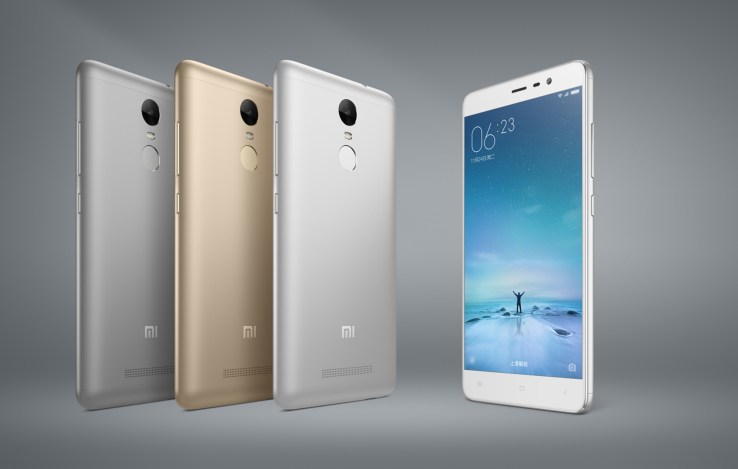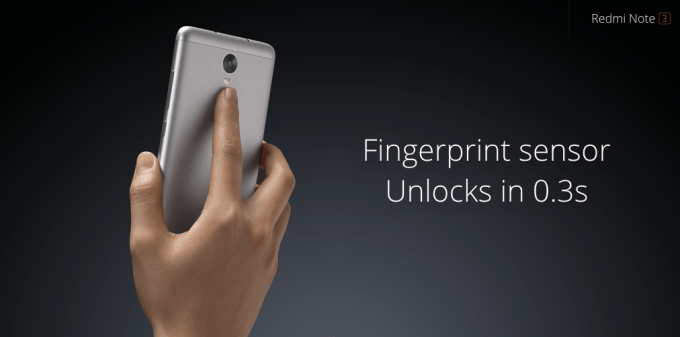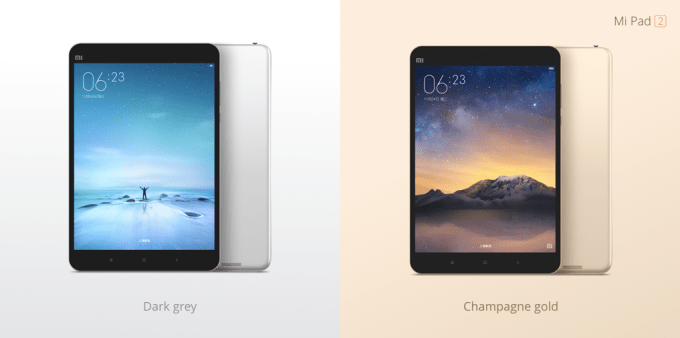
Increasing the focus on its nascent payment service, China’s Xiaomi has brought a fingerprint scanner to its range of affordable smartphones for the first time after it unveiled the third-generation Redmi Note in Beijing today.
The sensor, which is located on the reverse of the Redmi Note 3, is the most striking feature of the new 5.5-inch phablet, which will retail for 899 RMB ($140) and will initially debut in China. Also of note, the phone comes with a metallic body for the first time while Xiaomi has increased the device’s battery to a whopping 4000mAh capacity.
Under the hood, the phone is powered by a Helio X10 chip from MediaTek. It comes in at 8.65mm thick and, at 164g, is 4g heavier than the previous Redmi Note 2, which was unveiled just three months ago. The Redmi Note 3 also includes the same 13-megapixel front camera and five-megapixel rear camera as its predecessor.

This device is likely to be the first of many from Xiaomi to get a fingerprint scanner, but its unveiling today marks Xiaomi’s step into the payments space in a potentially major way. While the sensor can be used to unlock the phone without a passcode, like those on devices from other companies, that’s just the start.
Back in July, Xiaomi fully released Mi Wallet, a new feature that goes beyond services like Apple Wallet or Apple Pay to allow payments, bank account management and other financial services for Xiaomi device owners. Now, Xiaomi is widening the base for the mobile payment service that could be an important part of Mi Wallet.
The basic Mi Wallet service is available worldwide, but some specific elements — for example mobile payment — are limited to China for now. Given that Xiaomi sold 60 million devices last year, and it is aiming to reach 80 million this year, its entry into mobile payments could be hugely significant.
(Interestingly, just hours before this launch event, sources leaked Apple’s plan to launch Apple Pay in China by February. Coincidence? Just maybe.)
Xiaomi wasn’t quite done there for today, though.
The firm also unveiled its second generation tablet, the Mi Pad 2. Now with a full metallic body, like the Redmi Note 3, Xiaomi said the new Mi Pad is 18 percent thinner and 38g lighter than the previous model. Oh, and it comes in a new “Champagne Gold” color option, too.

In more detail, the Mi Pad has shifted over from its previous Nvidia internals, with the gen-two model powered by an Intel Atom X5-Z8500 processor with an Intel Atom 64-bit CPU. It has a 7.9-inch display, eight- and five-megapixel cameras on the back and front, and a 6190mAh battery. It also supports USB Type-C port.
The Mi Pad 2 is priced at 999 RMB (around $155) or 1,299 RMB (around $200) for 16GB and 64GB models, respectively. Interesting, the larger 64GB version will also be available as a Windows 10 device from next month — making it a fairly inexpensive entry point to Microsoft’s latest operating system.
And finally, because good things come in threes sometimes, Xiaomi announced the second generation of its ‘smart’ air purifier, which first launched in December. Version two is lighter and smaller, the company claimed.

Comments
Post a Comment